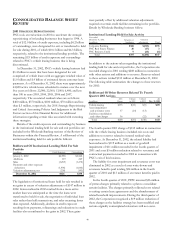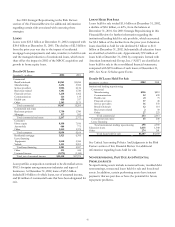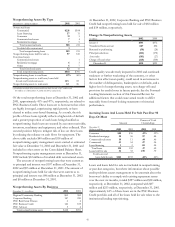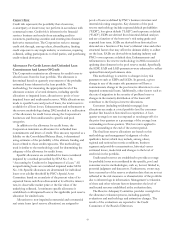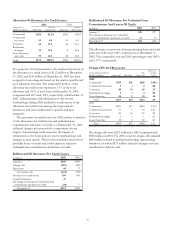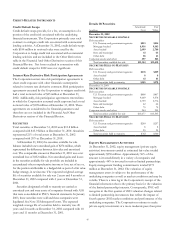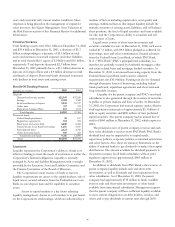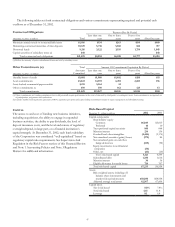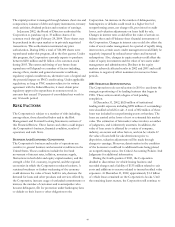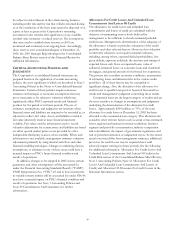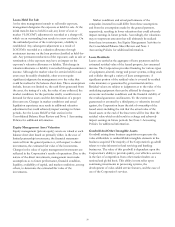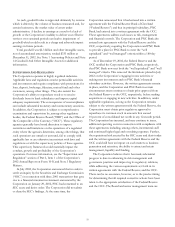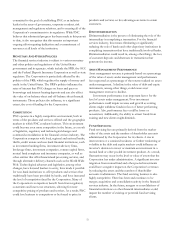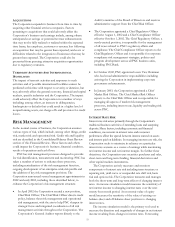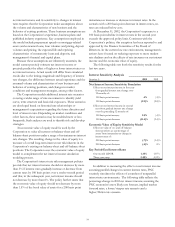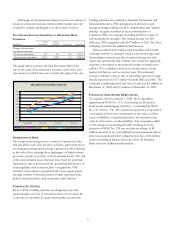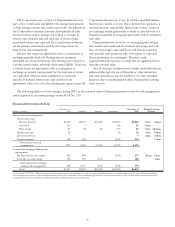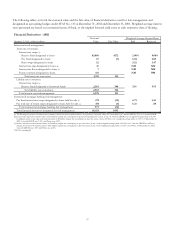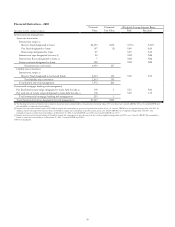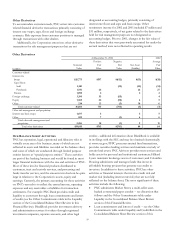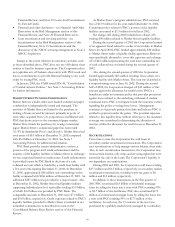PNC Bank 2002 Annual Report Download - page 52
Download and view the complete annual report
Please find page 52 of the 2002 PNC Bank annual report below. You can navigate through the pages in the report by either clicking on the pages listed below, or by using the keyword search tool below to find specific information within the annual report.50
Loans Held For Sale
At the time management intends to sell credit exposure,
management designates the exposure as held for sale. At the
initial transfer date to held for sale, any lower of cost or
market (“LOCOM”) adjustment is recorded as a charge-off,
which on an outstanding loan results in a new cost basis. On
the unfunded portion of the total exposure, a liability is
established. Any subsequent adjustment as a result of
LOCOM is recorded as a valuation allowance through
noninterest income on the loan portion classified as held-for-
sale. Any permanent reduction of the exposure, such as sale or
termination of the exposure may have an impact on the
exposure’s valuation allowance or liability. This change in
valuation allowance or liability is recorded through noninterest
income. Although the market value for certain held for sale
assets may be readily obtainable, other assets require
significant judgments by management as to the value that
could be realized at the balance sheet date. These assumptions
include, but are not limited to, the cash flows generated from
the asset, the timing of a sale, the value of any collateral, the
market conditions for the particular credit, overall investor
demand for these assets and the determination of a proper
discount rate. Changes in market conditions and actual
liquidation experience may result in additional valuation
adjustments that could adversely impact earnings in future
periods. See the Loans Held For Sale section in the
Consolidated Balance Sheet Review and Note 1 Accounting
Policies for additional information.
Equity Management Asset Valuation
Equity management (private equity) assets are valued at each
balance sheet date based on primarily either, in the case of
limited partnership investments, the financial statements
received from the general partner or, with respect to direct
investments, the estimated fair value of the investments.
Changes in the value of equity management investments are
reflected in the Corporation’s results of operations. Due to the
nature of the direct investments, management must make
assumptions as to future performance, financial condition,
liquidity, availability of capital, and market conditions, among
others, to determine the estimated fair value of the
investments.
Market conditions and actual performance of the
companies invested in could differ from these assumptions
and from the assumptions made by the general partners,
respectively, resulting in lower valuations that could adversely
impact earnings in future periods. Accordingly, the valuations
may not represent amounts that will ultimately be realized
from these investments. See Equity Management Activities in
the Consolidated Balance Sheet Review and Note 1
Accounting Policies for additional information.
Lease Residuals
Leases are carried at the aggregate of lease payments and the
estimated residual value of the leased property, less unearned
income. The Corporation provides financing for various types
of equipment, aircraft, energy and power systems, rolling stock
and vehicles through a variety of lease arrangements. A
significant portion of the residual value is covered by residual
value insurance or guaranteed by governmental entities.
Residual values are subject to judgments as to the value of the
underlying equipment that can be affected by changes in
economic and market conditions and the financial viability of
the residual guarantors and insurers. To the extent not
guaranteed or assumed by a third party, or otherwise insured
against, the Corporation bears the risk of ownership of the
leased assets including the risk that the actual value of the
leased assets at the end of the lease term will be less than the
residual value which could result in a charge and adversely
impact earnings in future periods. See Note 1 Accounting
Policies for additional information.
Goodwill And Other Intangible Assets
Goodwill arising from business acquisitions represents the
value attributable to unidentifiable intangible elements in the
business acquired. The majority of the Corporation’s goodwill
relates to value inherent in fund servicing and banking
businesses. The value of this goodwill is dependent upon the
Corporation’s ability to provide quality, cost effective services
in the face of competition from other market leaders on a
national and global basis. This ability in turn relies upon
continuing investments in processing systems, the
development of value-added service features, and the ease of
use of the Corporation’s services.


